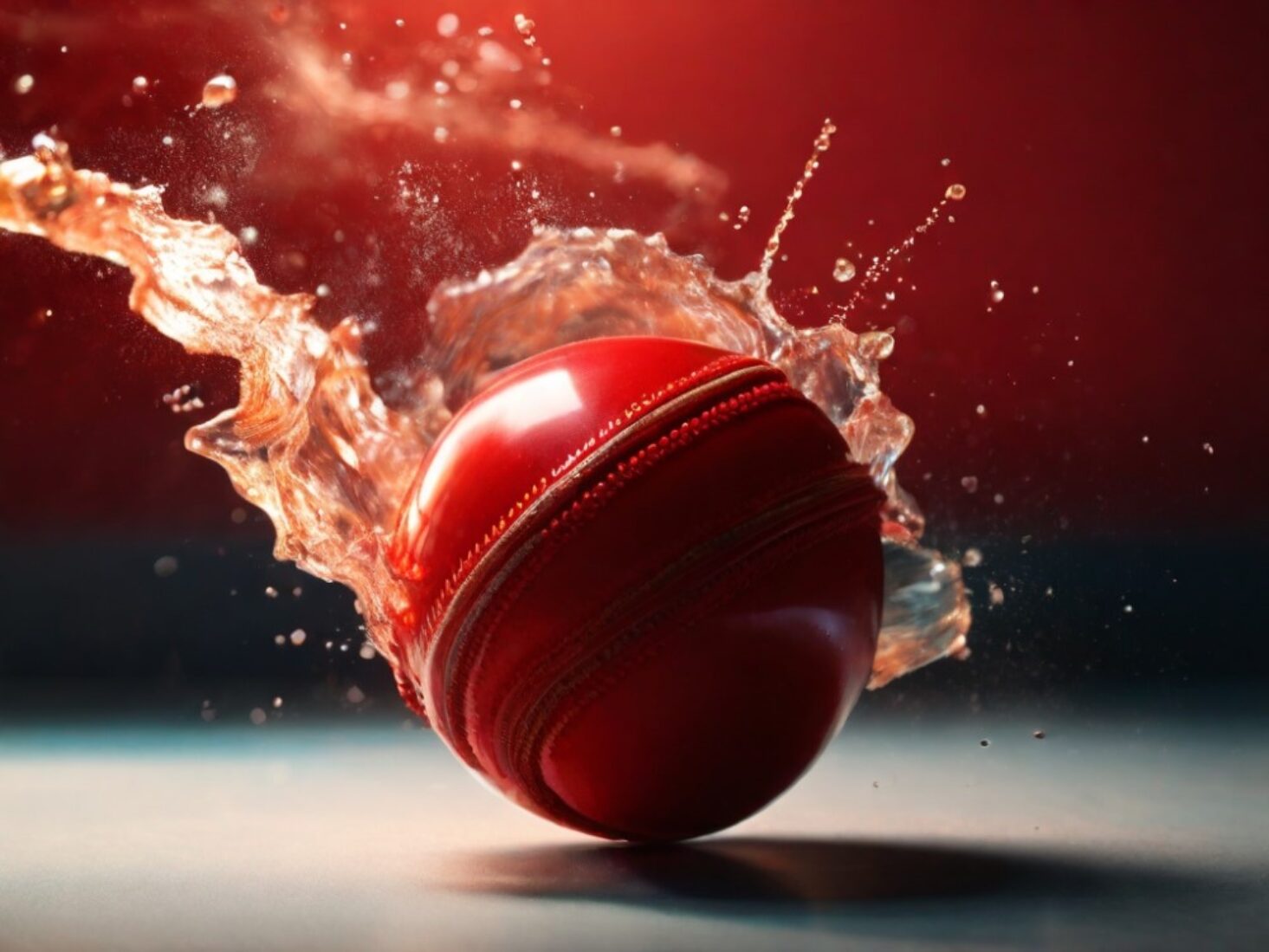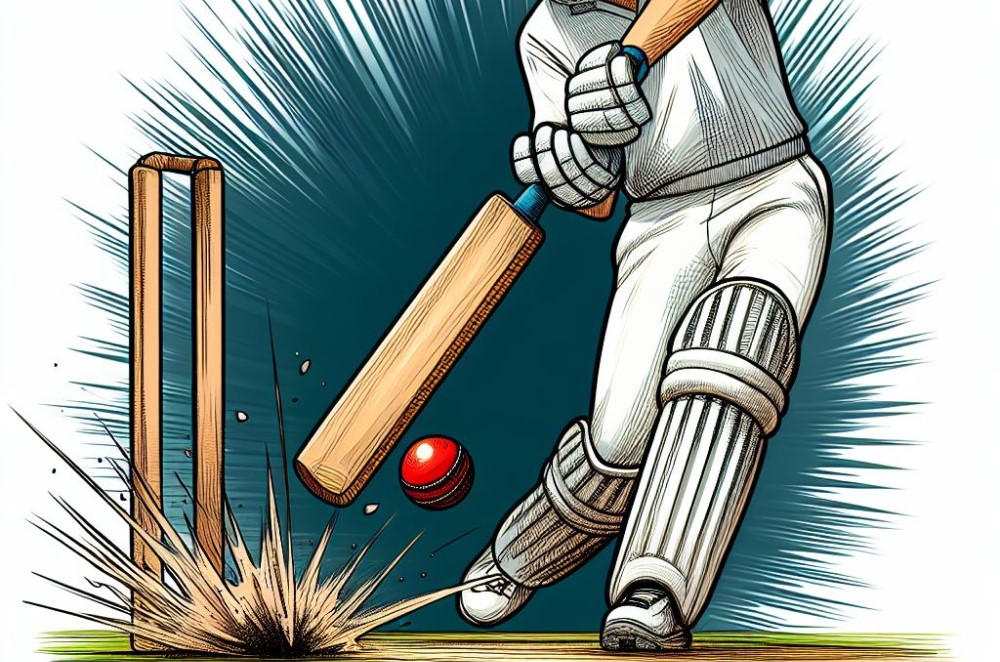
Whats The Impact Of Ball Tampering On Bowling In Cricket
Ball tampering has been a longstanding controversy in the world of cricket, with its impact on the game, specifically on bowling techniques, being a subject of significant discussion. Ball tampering refers to the deliberate alteration of the condition of the cricket ball, often with the aim of enhancing its performance in favor of the bowling team. The different methods of ball tampering include scuffing, scratching, and altering the seam position.
Players engage in ball tampering for various reasons, primarily to gain an advantage over the opposition. By modifying the ball, bowlers can achieve increased swing, unpredictable seam movement, or improved grip, which can make it difficult for batsmen to play shots effectively. However, ball tampering is deemed as cheating and goes against the spirit of fair play in cricket.
The impact of ball tampering on bowling is significant. Firstly, it affects the swing of the ball, as altering the surface can disrupt the airflow, changing the ball’s aerodynamic properties and reducing its ability to swing in the air. Secondly, ball tampering can influence bowling techniques, as bowlers may need to adapt their line, length, and release to accommodate the modified ball’s characteristics.
Furthermore, ball tampering can have consequences on bowling performance. The altered ball may behave erratically, making it challenging for bowlers to control their deliveries. The loss of swing or unpredictable seam movement can also diminish a bowler’s effectiveness, reducing their ability to take wickets and restrict the opposition’s scoring.
While ball tampering incidents often focus on the actions of players, the role of bowlers in ball tampering incidents is a subject of debate. While some argue that bowlers, as the primary handlers of the ball, participate in or are aware of ball tampering, others claim that they may be victimized by the actions of teammates or unaware of any tampering occurring.
Notable ball tampering scandals in cricket history, such as the Sandpaper Gate involving the Australian cricket team, highlight the controversy and the lasting impact of such incidents on the sport’s integrity and reputation.
Efforts have been made to prevent ball tampering, with measures implemented to counteract such practices. These include stringent regulations, strict penalties for offenders, increased surveillance, and the use of technologies like ball-tracking and enhanced inspection of the ball during matches.
What is Ball Tampering?

Ball tampering refers to the act of illegally altering the condition of a cricket ball in order to gain an unfair advantage. This can include actions such as rubbing the ball on rough surfaces, using foreign substances to alter the ball’s behavior, or intentionally damaging one side of the ball.
These actions can affect the ball’s movement through the air or off the pitch, giving bowlers an advantage in achieving swing or spin. Ball tampering is considered unethical and against the rules of cricket, as it undermines the integrity of the game.
What are the Different Methods of Ball Tampering?
There are several different methods of ball tampering in cricket that players have been known to employ. These methods include using their fingernails or other sharp objects to pick at the seam of the ball, roughing up one side of the ball with abrasive materials like concrete stands or bottle tops, applying artificial substances such as lip balm or sweetened saliva to the ball, and using bottle caps or boot spikes to scuff or scratch the surface of the ball.
These tactics are considered illegitimate measures that aim to alter the ball’s condition and affect its behavior during play.
Why Do Players Engage in Ball Tampering?
Players engage in ball tampering in cricket for various reasons.
These include gaining an unfair advantage, improving their own performance or their team’s chances of winning, and disrupting the opposition’s batting strategy. It is important to understand that the reasons behind ball tampering can vary from player to player.
Some players may resort to ball tampering due to the pressure to succeed or the desire to maintain their reputation. The competitive nature of the sport and the intense scrutiny players face can lead them to engage in such misconduct.
Additionally, players may view ball tampering as a strategic move to exploit the conditions of the game. By altering the ball, they aim to gain an advantage over their opponents and influence the outcome of the match.
To address this issue, it is crucial to educate players about the importance of fair play and the consequences of ball tampering. By raising awareness and promoting ethical behavior, players can understand the impact their actions can have on the integrity of the game.
Furthermore, implementing strict penalties and effective monitoring systems can act as deterrents, discouraging players from engaging in ball tampering.
What are the Motives behind Ball Tampering?
While ball tampering is considered illegal and unethical in cricket, players may still engage in it for various reasons. Motives behind ball tampering can include gaining an unfair advantage, altering the ball’s condition to favor the bowling side, or attempting to achieve reverse swing.
Players may be driven by the desire to win matches or secure personal success, leading them to resort to illicit measures. It is important to understand that ball tampering is a serious offense and can result in penalties and damage to the integrity of the game.
To prevent ball tampering incidents, strict measures and regulations have been implemented, including monitoring and surveillance during matches.
The Impact of Ball Tampering on Bowling

The Impact of Ball Tampering on Bowling has a significant impact on the game of cricket. When the ball is tampered with, its aerodynamics and behavior change, affecting the bowler’s ability to control it.
The process of ball tampering involves altering the ball’s condition to induce swing, reverse swing, or more spin. By scratching the ball or applying substances like sandpaper or saliva, the ball’s surface is modified, leading to unpredictable movement.
Bowlers rely heavily on the condition of the ball to deceive batsmen and take wickets. Ball tampering undermines the integrity of the game and can result in penalties for the players involved.
How Does Ball Tampering Affect the Swing of the Ball?
Ball tampering significantly impacts the swing of the ball in cricket. How Does Ball Tampering Affect the Swing of the Ball? By altering the condition of the ball, players aim to manipulate its aerodynamics and behavior when bowled. Methods like roughing up one side of the ball, picking the seam, or applying artificial substances compromise its natural movement through the air.
This reduces the effectiveness of swing bowling and can give unfair advantage to the bowler. The swing relies on the smooth and polished surface of the ball, which is disrupted by tampering. It is crucial to maintain the integrity of the ball to ensure a fair and balanced game.
Does Ball Tampering Influence Bowling Techniques?
Ball tampering can indeed have a significant influence on bowling techniques in cricket. By intentionally altering the condition of the ball, bowlers are able to manipulate its swing and movement, thereby making it exceptionally challenging for batsmen to play their shots effectively.
Techniques employed in ball tampering, such as using bottle caps, sweetened saliva, or roughening up the ball artificially, are all aimed at gaining an unfair advantage over the opposition. These illicit methods directly impact the bowler’s ability to generate reverse swing, control line and length, and deceive the batsman.
It is worth emphasizing that bowlers who are caught in ball tampering controversies not only face penalties but also experience a tarnished reputation. Preserving the integrity of the game is of utmost importance, and any form of illegitimate measures that can potentially influence the art of bowling must be vehemently discouraged.
What are the Consequences of Ball Tampering on Bowling Performance?
Ball tampering in cricket has severe consequences on bowling performance. When a ball is tampered with, its aerodynamics are altered, affecting its swing and movement. Bowlers rely on these characteristics to deceive batsmen and take wickets.
Tampering can result in the ball losing its shine, making it difficult to generate swing and control. It can also cause the ball to deteriorate quickly, reducing its effectiveness. Tampering can lead to penalties, such as penalty runs, which can give the opposing team an advantage.
Ball tampering undermines fair play and integrity in the sport, impacting the performance and credibility of bowlers.
The Role of Bowlers in Ball Tampering Incidents
The crucial role of bowlers in ball tampering incidents cannot be overlooked. There are several factors that must be considered when examining this issue:
- Intention: It is important to acknowledge that bowlers may play a part in ball tampering incidents, either directly or under the influence of team captains or other players.
- Method: Bowlers employ various tactics to gain an unfair advantage, such as using foreign substances, altering the condition of the ball, or scuffing it with their nails.
- Consequences: Bowlers who engage in ball tampering face severe penalties, including fines, match bans, and even suspensions. Additionally, their reputation and integrity may be irreparably damaged.
- Responsibility: Bowlers hold the responsibility of upholding the spirit of the game and setting a shining example of fair play on the field.
Do Bowlers Participate in Ball Tampering or are they Victimized by it?
Do Bowlers Participate in Ball Tampering or are they Victimized by it?
Bowlers can both participate in ball tampering and be victims of it, depending on the situation. Some bowlers may be involved in tampering by using methods like scratching the ball with their fingernails or using foreign objects to alter its condition.
Not all bowlers engage in such practices, and some may even be against it. Bowlers can also become victims of ball tampering when their ball is tampered with by the opposing team, affecting their performance negatively.
It is important to note that ball tampering is against the laws of the game and is considered a serious offense with penalties such as penalty runs or player suspensions.
Controversial Ball Tampering Incidents in Cricket

Controversial ball tampering incidents in cricket have had a significant impact on the game. One notable incident involved the Australian cricket team’s involvement in ball tampering during a test match against South Africa in 2018.
The incident sparked outrage and led to severe consequences for the players involved. Ball tampering can alter the ball’s condition, affecting its swing and grip, giving the bowling side an unfair advantage.
It is considered cheating and goes against the spirit of the game. The International Cricket Council has implemented strict regulations and penalties to deter such incidents and maintain the integrity of the sport.
Efforts to Prevent Ball Tampering
Efforts to prevent ball tampering in cricket have been the focal point. Stricter regulations, increased surveillance, and severe penalties have been implemented by cricketing authorities.
These efforts include regular inspections of players, the usage of CCTV cameras, and the enforcement of stricter punishments for offenders. In order to make it more challenging to tamper with the ball, manufacturers have come up with innovative technologies like incorporating microchips and developing tamper-proof packaging.
All of these initiatives have been put in place to maintain the integrity of the game and ensure fair competition. It is a known fact that the ICC (International Cricket Council) has introduced a ball-tampering level system, wherein level 1 offenders face fines, level 2 leads to suspensions, and level 3 results in bans.
What Measures have been Implemented to Counteract Ball Tampering?
To counteract ball tampering in cricket, various measures have been implemented. These measures aim to maintain the integrity and fairness of the game.
Strict penalties: Players involved in ball tampering face severe punishments, including suspensions, fines, or even bans from the sport.
Enhanced monitoring: Increased surveillance and stricter umpiring help detect and prevent any illegal interference with the ball.
Education and awareness: Educating players about the consequences of ball tampering and promoting fair play ethics plays a crucial role in discouraging such practices.
Technology advancements: The use of modern technologies like ball-tracking cameras and ball inspections assist in detecting tampering attempts.
Continual rule updates: The laws of the game regularly evolve to address new techniques or methods used for ball tampering.
By implementing these measures, cricket authorities are striving to ensure fair play and maintain the integrity of the sport.





